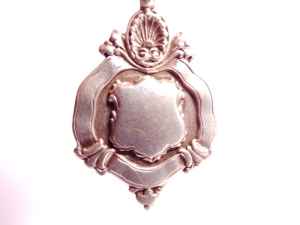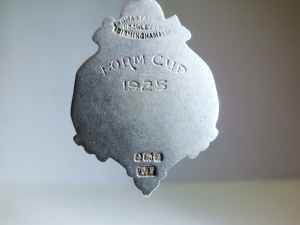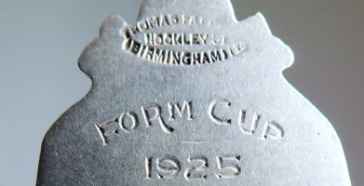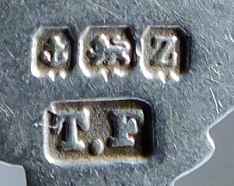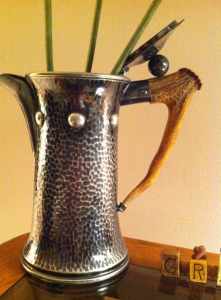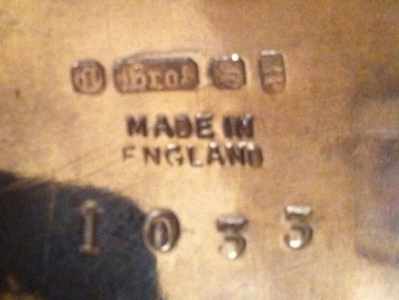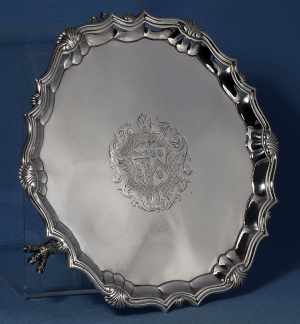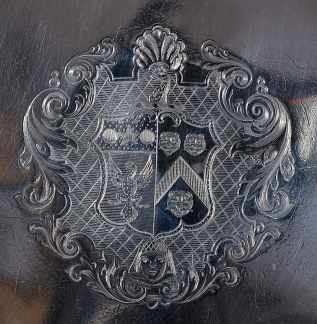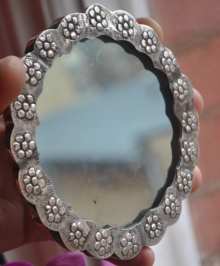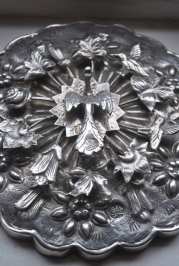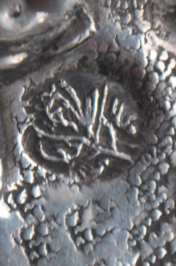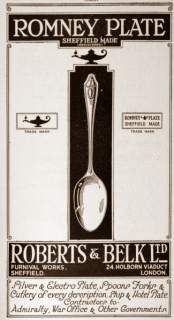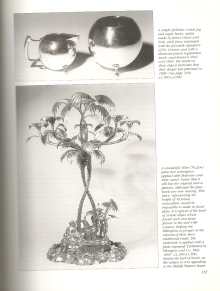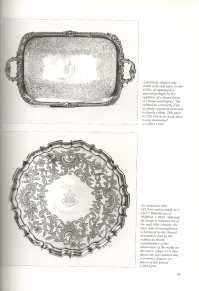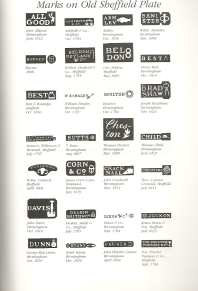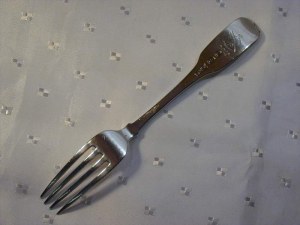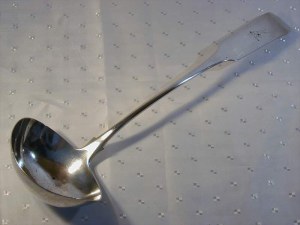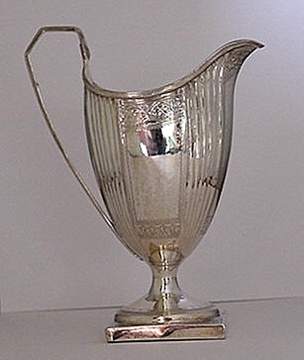
David McKinley presents:
Fraudulent Use of London Hallmarks

One of the commonest forms of fraud in the production of
silver plate is transposition (the fraudulent use of
legitimate hallmarks on an item that has never been
assayed) and it has been used by unscrupulous
silversmiths throughout the ages. It came to a head in
England after the introduction of plate duty in 1720 and
various steps were taken by the Goldsmiths? Company to
circumvent the practice.
Although many of these steps were successful they are,
as far as the wider public is concerned, esoteric and
this allows that transposition is still happening today......
click here

|
Welcome to new ASCAS members:
Hugh Arthur - Australia
Marc Deconinck - Belgium
Matthew Firmin - USA
Eli Freiman - Israel
Thomas LLywarch - England UK
Lynette Macdonald - Australia
Colleen Mouw - USA
Donald Picard - USA
Andrea Piccirilli - Italy
Virginia Tucker - USA
Giuseppe Zampano - Italy
Members' Window # 93
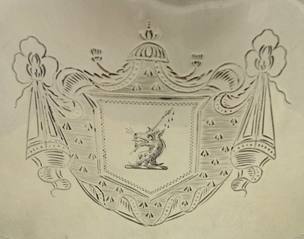
Joanne and Emmett Eldred
present:
Our Collecting Guidelines (6) - Crest or Coat-of-Arms

As mentioned earlier we tend to purchase sets with a
family crest and/or coat-of-arms. We have found that
researching an engraving on a piece to try and determine
its possible family connection adds considerably to our
collecting enjoyment.
The process of researching a crest or coat-of-arms
involves number of interesting activities and one
quickly fashions himself as a detective trying to solve
a mystery. The first step is sorting through the various
heraldic terms and meanings. This is not an easy task
when one considers that individuals in the 19th century
spent their entire careers focused on the subject and a
few were even knighted for their heraldic proficiency
and contributions (e.g., Bernard Burke in 1855).....
click here

|
Dekra Hadi writes:
...I'd wish to know more about this item and its maker.
Thanks for your help
Dekra Hadi
Your item is a watch FOB. The Encyclopaedia Britannica
describes it as:
...short ribbon or chain attached to a watch and hanging out of
the pocket in which the watch is kept; the term can also refer
to ornaments hung at the end of such a ribbon or chain....
Presumably your FOB was the prize for the winner of the 1925 "Form
Cup"
It is hallmarked Birmigham 1924, maker Thomas Fattorini.
Information about this firm are available in my website at
http://www.silvercollection.it/englishsilvermarksXT2.html
Giorgio Busetto
Andrea Menarini writes:
... I've found an icon silver cover, unfortunately just the
cover, but it seems very well hand worked.
It has two Cyrillic inscriptions at the right and left top
corners.
It bears three hallmaks. One is similar to the mark of
Heidelberg as reported in the book of Jan Divis.
The other one is the number 12 (12 lot or 0,750 fineness), so
one can imagine a German work.
But in the last one, may be the hallmark of the silversmith, I
can't recognize nor Latin letters nor Cyrillic ones.
Maybe someone can give information about the matter (who's the
saint, what is the meaning of the Cyrillic inscriptions and
particularly what can be inferred from the hallmarks).
Thanks in advance
Andrea Menarini
I believe that this is the image of St. Min� (a religious
image venerated in Greek Orthodox Church). I trust in further
detail about your item by ASCAS members
Giorgio Busetto
Chris Sawatsky writes:
....I have an interesting piece that was of my grandfathers. I
have been unable to determine where these markings are from.
Here are a couple of photos of what I believe is a pot.
Can you help me?
Chris Sawatsky
Simone Spinozzi writes:
....I have a salver made by Robert Abercromby. In the centre
there is a coat of arms. I research information about the coat
of arms and the family.
Thank you for your help.
Simone Spinozzi
In this column we present a page obtained from makers'
brochures, books, auction catalogs, advertising or whatever
other printed paper, related to silver, that may be of interest
for ASCAS members.
The images will be published at a "low resolution" level and for
private and personal use only
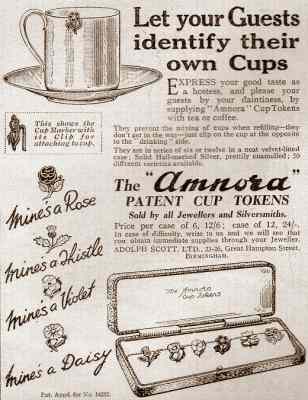
|
This month ASCAS presents an advertisement of:
The "AMNORA"
PATENT CUP TOKENS
Lets your Guests identify their own Cups
Express your good taste as a hostess, and please
your guests by your daintiness, by supplying "Amnora"
Cup Tokens with tea or coffee. They prevent the
mixing of cups when refilling they don't get in the
way- just clip on the cup at the opposite of the "drinking"
side.
They are in series of six or twelve in a neat
velvet-lined case; Solid Hall-marked silver,
prettily enamelled; 50 different varieties available.
Price per case of 6, 12/6; case of 12, 24/-
The advertisement was published by ADOLPH SCOTT,
LTD, 23-26 Great Hampton Street, Birmingham.
Pat. Appd. for No 14232 (this number belongs to the
series released in the year 1884)
|
"A WORD per MONTH"
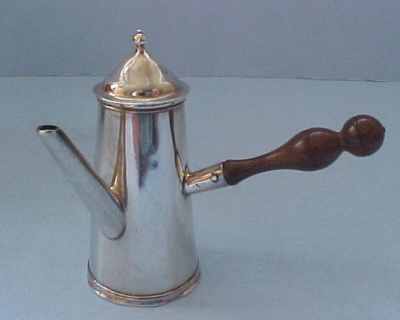
|
MINIATURE SILVERWARE
DOLL'S HOUSE MINIATURE
Miniature silverware is a tiny versions of objects
that, in full size, have an ornamental or functional use.
Miniature copies of everyday wares were made from the
late 17th century onwards. A wide range was covered and
included such diverse objects as candlesticks, tankards,
kettles, teapots, coffee pots, dishes and trays.
They were copied carefully from full-size examples of
the period.
Only few of these objects bear marks enabling them to be
dated. Most pieces have only the maker's mark as they
were so small as to have space for only a single stamp.....
more
|
"A SILVERSMITH per MONTH"
|
|
ROBERTS & BELK LTD
The firm was established as
Furniss, Poles & Turner. The first hallmark was entered
in Sheffield Assay Office as "plate worker, Furnival
Street, Sheffield" on December 20, 1810.
From c.1822 to 1945 the firm traded as William Briggs (hallmark
entered as Plate Worker, Button Lane on August 14,
1822).
Later William Briggs entered in partnership with Samuel
Roberts and Joseph Slater. In 1845 the firm, trading as
Roberts & Slater, silver and electroplate manufacturers,
entered its hallmark in Sheffield Assay Office (September
1, 1845. Address: Furnival Street)......
more
|
"A BOOK ON MY SHELF"
In this column we present books, new
or ancient, dealing with silver in all its aspects (history,
marks, oddities...). This isn't a "book review" but only a fair
presentation of some useful "tools" that anyone may have in the
shelf of his bookcase.
ASCAS members are invited to contribute to this column
(click to enlarge images)
In the "book on my shelf" of this month ASCAS presents:
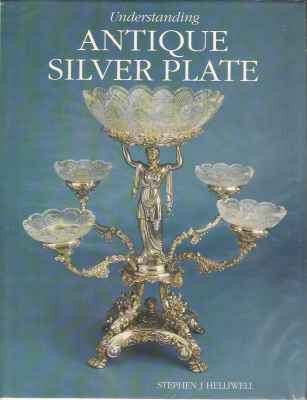
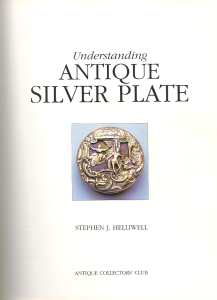
|
Understanding
ANTIQUE SILVER PLATE
by Stephen J. Helliwell
- 2000 -
As antique silver has become increasingly
expensive, more and more collectors are turning to
silver plate, which can still be found relatively
inexpensively. Old Sheffield plate, or fused plate,
has enjoyed a long history of popularity but
electroplate has only been collected comparatively
recently. Once seen as strictly utilitarian, it is
now highly sought after, particularly in America,
where designs for plate from the 1880s onwards were
extremely imaginative.
Stephen J. Helliwell has produced the first book to
describe the Old Sheffield plate and electroplate,
along with their short-lived predecessors,
mercury-plating, cold gilding and close plating.
The book is divided into collectable areas, such as
candlesticks, cutlery and objects related to
drinking, and each item illustrated is described and
given an up to date valuation.
Collectors and dealers alike will find a wealth of
indispensable information in this book.
|
"A CREST per MONTH"
In this column we present images and
descriptions of Crests and Mottoes of British, Irish and
Scottish families as engraved on silver items.
PILKINGTON
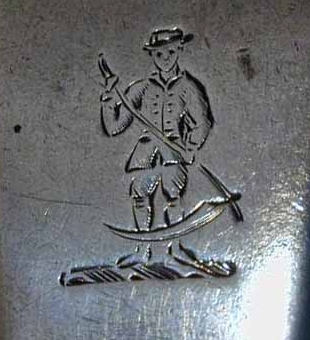
|
A crest used by
Lincolnshire, Northamptonshire, Durham, Lancashire and
Leicestershire families. The crest description is "a
mower, with scythe, vested".
The crest was found on cutlery hallmarked Dublin, maker
Samuel Neville and London 1815, maker WE into a
rectangle (possibly William Eaton, entered 1813)


|
Closing our
February 2012 edition of ASCAS Newsletter I hope you have
appreciated its content.
Your comments, suggestions and advice will be of great help.
My thanks to Naveen Bhatt, Joanne and Emmett Eldred, Dekra Hadi,
David McKinley, Andrea Menarini and Chris Sawatsky and Simone
Spinozzi for their invaluable contributions.
Giorgio Busetto
Secretary
DISCLAIMER AND PRIVACY POLICY
ASCAS is a community of people having a common
interest in antique silver.
It is a non-profit association without commercial links.
Membership is open to whomever has a true interest in
this subject matter.
ASCAS has no real property and no fees are requested nor
accepted from members.
ASCAS keeps in touch with its members only through
periodical newsletters, e-mails and web-site updating
and ignores and is not responsible for any other
activity pursued by its members.
Likewise, ASCAS is not responsible for opinions,
evaluation and images displayed, and in any form
published or supplied for publication, by its members
who, in any case, maintain the property of their works
and assure the respect of national and international
legislation about Intellectual Property.
ASCAS does not have the full addresses of its members (only
town, country and e-mail address are requested for
membership).
ASCAS handles and protects with care its members' e-mail
addresses, will not disclose the addresses to third
parties, will use this information only to reply to
requests received from members and for communications
strictly related to its activity.
These rules are expressly accepted by submitting the
membership request.
|
|
 newsletter # 93 February 2012
newsletter # 93 February 2012








